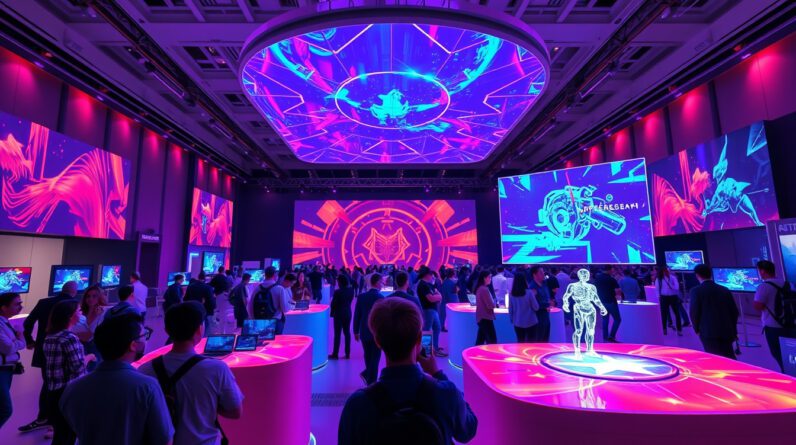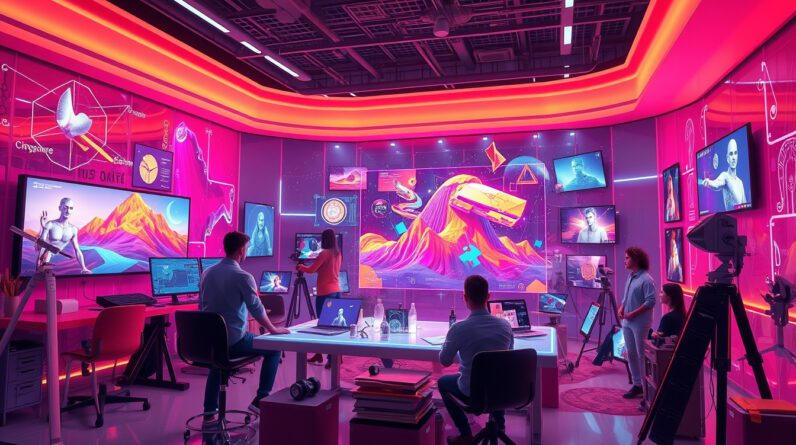
In a groundbreaking move that promises to elevate gaming graphics to unprecedented levels, Nvidia and Microsoft have unveiled their plans for integrating neural shading into Microsoft’s DirectX. Set for a preview in April 2025 at the Game Developers Conference (GDC), this innovative technology aims to revolutionize real-time graphics rendering by leveraging the power of artificial intelligence. By utilizing cooperative vectors along with Nvidia’s advanced Tensor cores, neural shading enables a harmonious coexistence of AI-driven features and traditional graphics rendering techniques via the High-Level Shading Language (HLSL). As the gaming industry grapples with the challenge of keeping up with rapid hardware advancements, this collaboration between two tech giants signifies a major leap forward in enhancing materials, lighting, shadows, and textures during the shading process. Let’s delve deeper into the impact of neural shading on game graphics, the collaborative efforts driving its development, and what the future holds for this state-of-the-art technology.

Takeaways
- Neural shading integration in DirectX is set to revolutionize real-time graphics rendering by merging AI with traditional techniques.
- Cooperative vectors and Nvidia’s Tensor cores play a crucial role in optimizing the graphics rendering pipeline for better performance.
- Broad support from major hardware companies like Intel, AMD, and Qualcomm indicates a collaborative future for neural shading technology.
The Impact of Neural Shading on Game Graphics
## The Impact of Neural Shading on Game Graphics
In a groundbreaking announcement, Nvidia and Microsoft are set to unveil the integration of neural shading into Microsoft’s DirectX during the Game Developers Conference (GDC) in April
2025. This innovative technology employs cooperative vectors along with Nvidia’s advanced Tensor cores to significantly enhance the graphic rendering pipeline in video games. With the ability to blend AI-driven features with traditional rendering techniques seamlessly via the High-Level Shading Language (HLSL), neural shading represents a noteworthy leap forward in the realm of real-time graphics, an area that has historically kept pace with but struggled to fully capitalize on rapid hardware advancements.
Neural shading’s primary objective is to revolutionize critical visual elements like materials, lighting, shadows, and textures by harnessing AI capabilities during the shading phase. The introduction of cooperative vectors permits small neural networks to operate effectively across various shader stages, paving the way for optimized graphics processing unit (GPU) utilization. While these vectors necessitate specialized hardware such as Nvidia’s Tensor cores, they will also gain support from Intel’s XMX hardware and are expected to make their way to AMD’s forthcoming RDNA 4 architecture.
In a bid to foster widespread acceptance and maximize the potential of neural shading technology, Microsoft is collaborating with industry giants including Intel, Nvidia, AMD, and Qualcomm. Despite initial indications that the preview may seem Nvidia-centric, the partnership with Intel on cooperative vectors highlights an intention for a more inclusive ecosystem. As gaming developers gear up for this next-generation graphical advancement, questions linger regarding the actual performance and efficiency of neural shading across diverse GPUs, particularly in terms of image quality and overall performance.
Collaborative Efforts and Future Prospects
As the gaming industry continues to push the boundaries of graphics technology, the collaboration between Nvidia and Microsoft signifies a pivotal moment for developers and gamers alike. By incorporating neural shading into DirectX, Microsoft is not only enhancing the gaming experience but also setting a new standard for graphics realism. The technology leverages neural networks to intelligently process graphical data, which can lead to more realistic environments, dynamic lighting effects, and richer textures that respond to player interactions. While the potential for improved visuals is exciting, developers are also eager to understand how this innovation will influence game design practices. With the anticipated preview at GDC 2025, many are preparing for a transformation in their workflows, while optimistically expecting neural shading to ease the resource load on GPUs without sacrificing quality. This dual focus on performance and visual fidelity represents a beneficial evolution in game development, unlocking new possibilities for storytelling and immersive gaming experiences.




